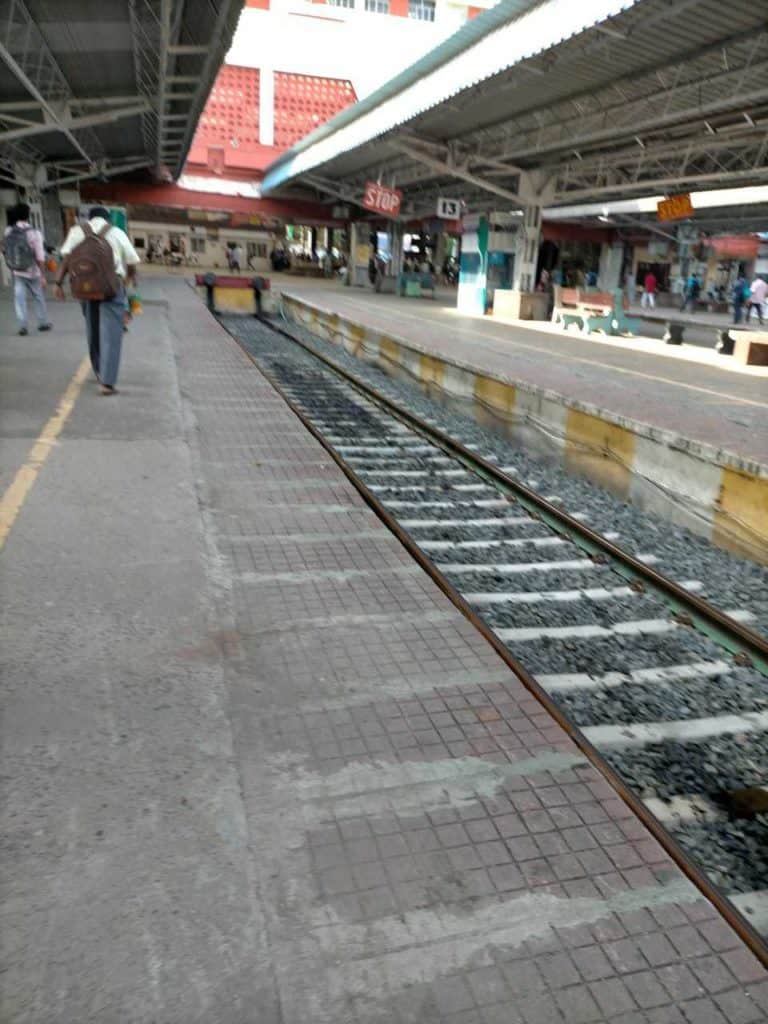After six months of working from home, I had to report in-person to my office near Central station from November 1st. When the mail about this first came in, I was a bit flummoxed over how to plan my transportation all the way from Ponneri.
The MTC buses were already crowded and travelling in them would be throwing caution to the winds. I did not want to take any chances. Not having much of a choice, I sought help from my friend who works with one of the private riding sharing platforms. He offered to pick me up from home and drop me at my office at Central for Rs 500 a day. This arrangement worked temporarily, but I was waiting for the resumption of suburban train services, so that I could cut down on my transportation costs.
Travelling by train takes me anywhere from 50 minutes to two hours as other express and goods trains cross that way. Although I could reach my workplace in 50 minutes if I take a cab, it is not financially viable. I prefer going by trains where the three-month season ticket plan at Rs 500 helps save significantly.
From November 4th, Southern Railways began allowing employees of private companies in essential sectors like health, education, sanitation etc to travel by suburban train. Having travelled mostly by train for the past eight years, I felt relieved by the announcement.
To resume travelling, I had to produce an authorization letter from my company as proof.
Promising signs
I visited the ticket counter on November 4th to buy a season ticket. I found that there were not many protocols pertaining to COVID-19 being followed, as was being done in other public places. Body temperature was not checked at the entry point, and there was no sanitiser dispenser to be seen anywhere on the premises.
While this was the scene at the counters, what I saw on the platforms and in the trains was more heartening. Overcrowded and often dirty compartments, footboard travel, vendors selling spiced cucumber/mango/pineapple slices are usual sights during any regular suburban train experience, but the COVID experience seems to have completely altered this.
The station and trains were largely empty since entry was restricted. 95% of the passengers wore a mask and maintained distance. I was surprised to see the level of discipline and adherence to COVID safety norms.

On my part, I ensured that I had my mask all the time and had properly sanitised my hands and belongings before leaving home and after reaching office.
In terms of cleanliness, there has been drastic improvement across the platforms and trains. While it was common to see stained compartments earlier, the trains are now spic and span. However, I am not sure if the Railways sanitises the trains after every trip.
Having worked in the pharma industry in the past and also having read the opinion of medical experts, I realise that the chances of transmission of the virus through surfaces is relatively less, hence there is no need to panic about touching hangers or seats. This makes the prospect of train travel less harrowing for those using this mode to commute.
Gaps to be filled
Some concerns persist, however.
Firstly, the frequency of trains has been drastically reduced. There is one train every 30 minutes whereas earlier, you had one train every 10 minutes. The reduction in frequency has made it necessary to plan in advance and be prepared for longer waiting time should you miss a train for some reason.
Secondly, foot-operated sanitisers need to be installed at the entrance of the station, near staircases, on platforms and in trains. This will ensure that those entering the premises can stay safe. This is being done across the city at various places both by the government and private entities, so the railways should follow suit for the wellbeing of its commuters.

Thirdly, COVID awareness materials should be displayed in Tamil and English. At present, they are in Hindi which makes little to no sense, considering that a majority of the population in Chennai does not know Hindi. Communicating public health related announcements in the language that most local people are well-versed with, can improve compliance and serve the purpose.
With the railways deciding to allow women, children, vendors and athletes too to travel by trains, fixing these gaps becomes crucial to avoid any risk of transmission of COVID-19. The resumption and opening up of trains has been a huge relief for commuters, but continued vigilance on the part of the authorities as well as fellow travellers will go a long way in ensuring safety and building trust.
Good and useful article.
Useful information
Excellent and useful information for the train commuters